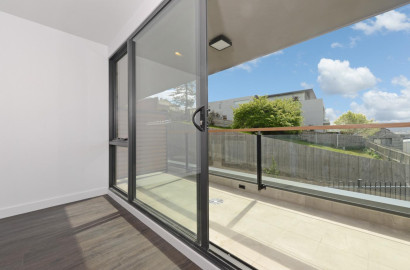A cooler rental market is prompting more property managers to offer concessions in a bid to attract new tenants. Though rent growth is only slightly softer than last year, far more property managers are offering short-term perks.
The share of rental listings with a concession — a sweetener such as free weeks of rent or free parking offered as an incentive to renters — jumped sharply last fall, and has persistently remained near one in three rentals with a concession in the months since. That has come amid a multifamily construction boom that continues to rise — more multifamily units were completed in June than in any month in nearly 50 years. That is opening up new options for renters and spreading demand across more homes.
While short-term perks in the form of concessions help rental affordability, rents have so far continued to rise, though the pace of growth has slowed. The typical U.S. rent rose 0.4% in July to $2,070, down from 0.5% growth in June and 0.6% growth in April and May. Annual rent growth slowed as well, with rents up 3.4% year over year, compared to 3.5% year-over-year growth in June.
This slowdown in rent growth is helping the typical renter stay just on the right side of affordability. A household earning the median renter income would spend 30% of that income on rent. That is an improvement from 2022, but right on the edge of what is considered affordable.
Property managers are responding to this cooler market by offering concessions more often. Nationwide, 33.2% of rental listings on Zillow offered a concession in July, up from 25.4% last year.
More than half of rental listings on Zillow are offering a concession in six major metro areas: Raleigh (53.3%), Charlotte (53.1%), Atlanta (52.2%), Salt Lake City (50.9%), Nashville (50.8%) and Austin (50.5%).
Four major metros have a smaller share of listings with a concession than last year, indicating a more competitive rental market. Those are San Jose (-9.7 percentage points), Baltimore (-5.6), Milwaukee (-1.8) and Pittsburgh (-0.2).
The Zillow Observed Renter Demand Index, a measure of rental market tightness, has fallen by 23.3% since last July. Rather than a reflection of lessening demand, it’s more likely the massive influx of new apartments hitting the market is causing that demand to spread across more listings. That is a hallmark of a healthier market with a better balance between supply and demand.
The rental vacancy rate, another measure of market tightness, held steady at 6.6% in the second quarter of this year, where it has sat for the past four quarterly readings. That’s the highest since winter 2021.
The question as we look ahead is whether the current status quo of slow rent growth and elevated concessions will continue, or whether rents will actually come down. The recent mortgage rate dip could soften rental demand as more households can afford to buy a home. A labor market slowdown could also contribute to falling rents.
Related posts:
Building permits issued in May decreased to 1,386,000 (SAAR). That’s 3.8% below the revised April rate and 9.5% lower than a year ago.

 Mortgage Rates Eased Slightly This Week On Employment Data Revisions And Fed Minutes
Mortgage Rates Eased Slightly This Week On Employment Data Revisions And Fed Minutes
 July 2024 Housing Starts: Housing Starts Fall, Single Family Starts At Lowest Level Since April 2023
July 2024 Housing Starts: Housing Starts Fall, Single Family Starts At Lowest Level Since April 2023
 Singapore Overtakes Hong Kong In Terms Of Property Investment Prospects
Singapore Overtakes Hong Kong In Terms Of Property Investment Prospects
 May 2024: New Home Sales Fell Despite Easing Mortgage Rates in May
May 2024: New Home Sales Fell Despite Easing Mortgage Rates in May
 June 2024 Housing Starts: Housing Starts Rebound in June, Single-Family Construction Slows Less Than Expected
June 2024 Housing Starts: Housing Starts Rebound in June, Single-Family Construction Slows Less Than Expected